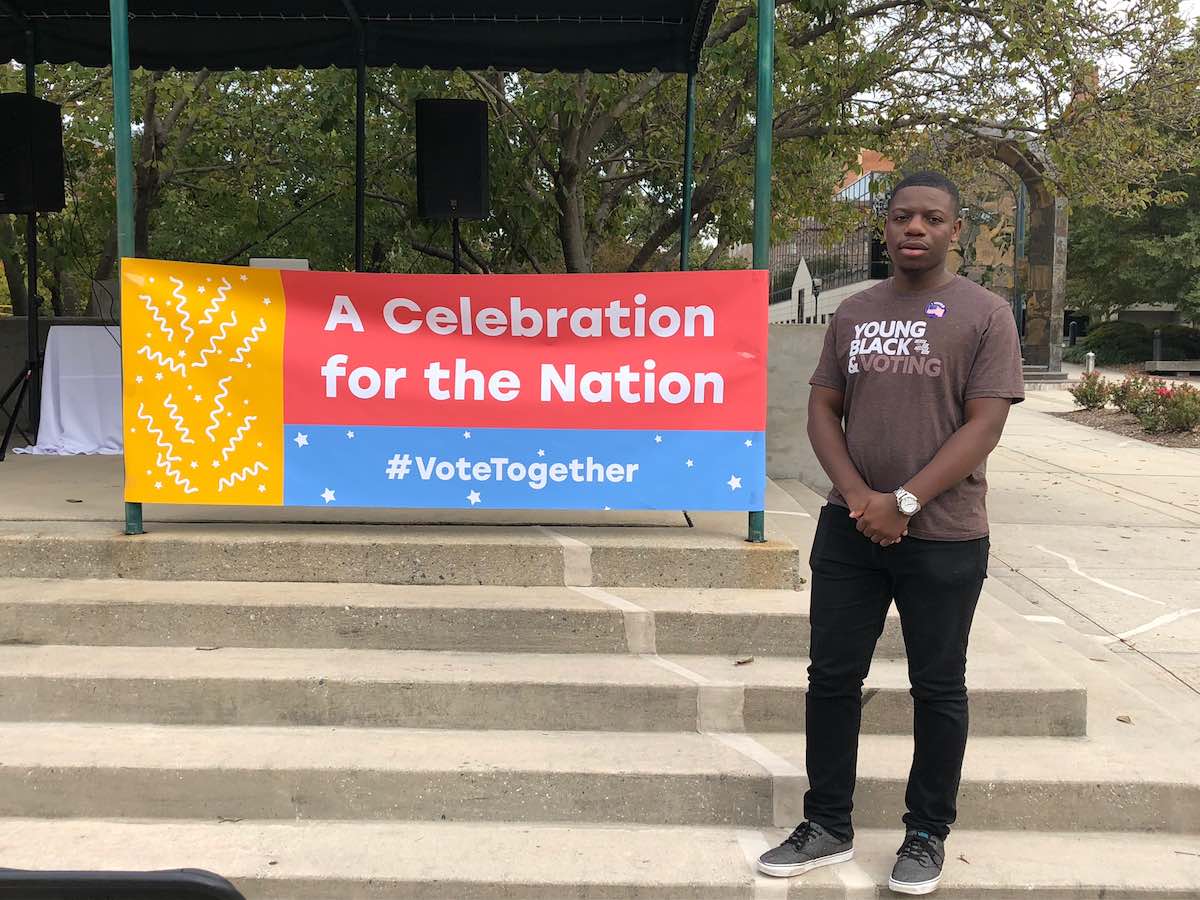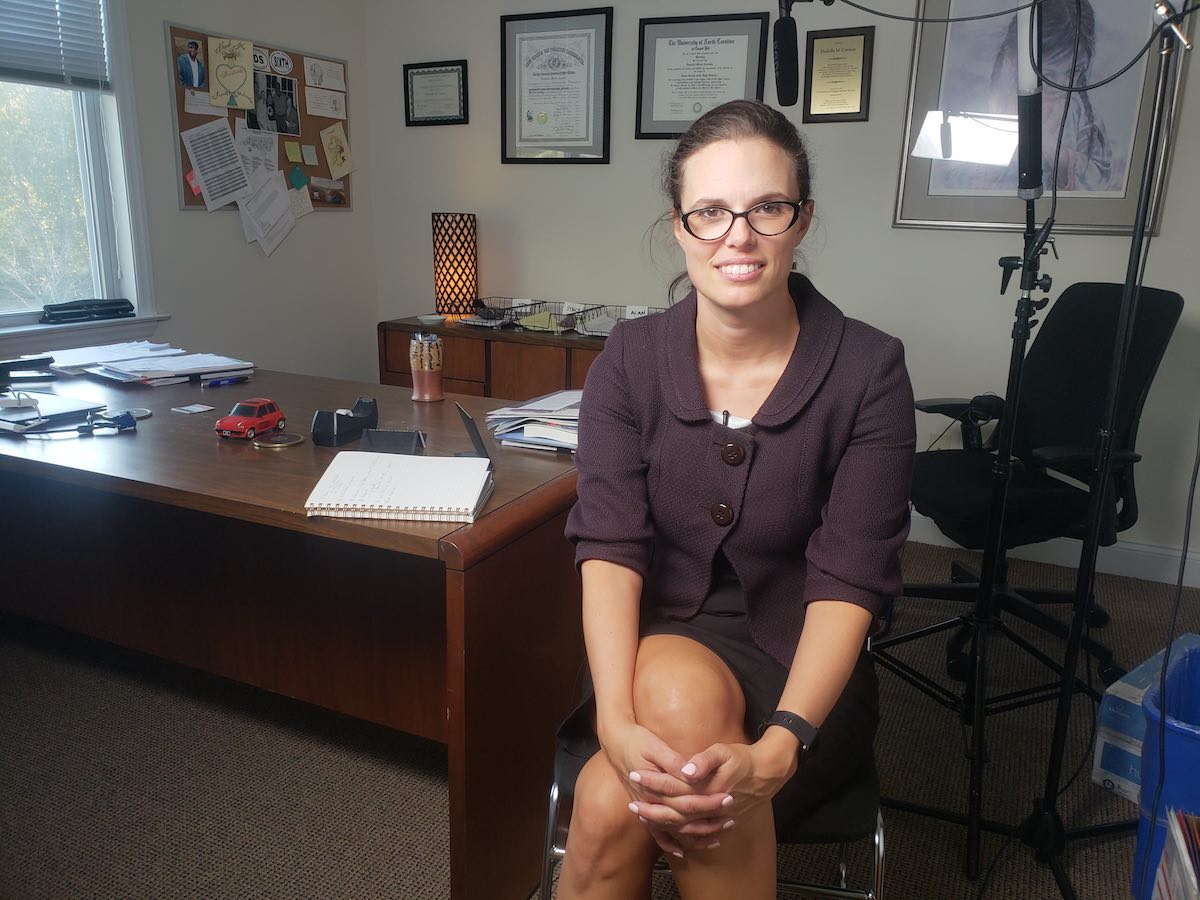 (Student activists Love Caesar, Kylah Guion, and Braxton Brewington are tabling in the North Carolina A&T cafeteria, ahead of the midterm elections. (Photo credit: Kamaya Truitt))
(Student activists Love Caesar, Kylah Guion, and Braxton Brewington are tabling in the North Carolina A&T cafeteria, ahead of the midterm elections. (Photo credit: Kamaya Truitt))
I graduated in 2017 from North Carolina A&T State University, known as A&T, the largest historically black college in the nation. Until my senior year, the entire school was in the mostly black 12th district, represented by Alma Adams – an alum of the school. But two years ago, the campus was split into two districts.
North Carolina is one of the most blatantly gerrymandered states in the country. Two years ago, the Supreme Court ruled that the state’s political map was unconstitutional, as it disadvantaged black voters. So the map was redrawn. But again in 2018, it was ruled to be unconstitutional for favoring Republicans.
When A&T was split into separate congressional districts, it was divided right down Laurel Street. I walked along Laurel Street with Braxton Brewington, a student voting activist.
“We are in District 6 — we are right in front of Bluford Library. Then across the street you have District 13. So that’s a whole different representative. People are walking across the district line everyday, whether they know it or not,” Brewington said.
With A&T’s divide, one black university is now in two districts, both of which are majority white and represented by Republicans. Two years ago, when the split happened, Republican map-makers said they were not trying to break up the black vote. Still, many students have their doubts.
“To me, it just looks like you’re taking all of our voting power and you’re diluting our vote,” said Love Caesar.

Braxton Brewington is a student voting activist at North Carolina A&T. (Photo credit: Kamaya Truitt)
Student activists like Brewington are also worried that the split down the middle of campus could prevent students from voting altogether, because of the confusion as to where to cast a ballot. I watched Brewington tabling in the cafeteria, asking individual students whether they were registered and checking to make sure they knew which of the two districts they were supposed to vote in.
Officials at the local board of elections are aware of the confusion on campus around getting to the correct polling place. However, Guilford County elections director Charlie Collicutt pointed out a silver lining.
“You could argue that A&T has two representatives in the U.S. House of Representatives instead of one. So yes, the party might be opposite of what the majority of that campus is statistically, but at the same time you’re doubling your representation,” he said.
The new district lines are actually simpler than the old district 12 lines, which looked long and skinny, like a snake. But activists say the split district at A&T is part of a larger trend across the state that impacts young voters.
“We’ve seen wave after wave of voter suppression efforts targeted at both black voters and young voters. So young black voters are at the intersection of being the recipient of double-time voter suppression,” said Allison Riggs, a senior staff attorney at the Southern Coalition for Social Justice.

Although the district map of North Carolina is due to be re-drawn, it won’t happen in time for the 2018 midterm elections. So for now, student activists at AT&T will keep working to register their classmates on campus, hoping that on Election Day their voice will be heard, despite being split.